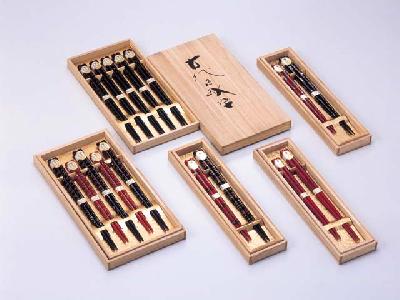Wakasa Agate Work, highly regarded internationally, is thought to have originated in the Nara period (710-794AD) when a sea-faring people known as the Wani Tribe entered Onyu, an old village in the Wakasa region of Fukui Pref. They built Wani-Kaido, a road in front of a shrine, which bordered Wakasaichi Buddhist statue, and started producing jade objects.
In the middle of the Edo period (1600-1868), a technique to burn ore and enhance the color of agate was perfected. However it was not until the Meiji period (1868-1912) that the sculptural technique of agate was introduced and perfected as a craft art.
It employs the firing techniques that are unique to Wakasa agate work and, then, hardened ores that glow with beautiful color are cut and painstakingly polished to create such things as Buddhist statues, animal ornaments, incense burners, plummets for hanging scroll, clips for obi (kimono belt), and broaches.
Wakasa agate work requires incredible proficiency and patience taking a minimum of three years to master the polishing technique and another five or six years to be able to fully work the pieces. The apprenticeship can take up to fifteen years, only then will a craftsman be considered a true artist. However, once mastered, the beauty of the clear delicate gloss can be found nowhere but Wakasa agate.





















